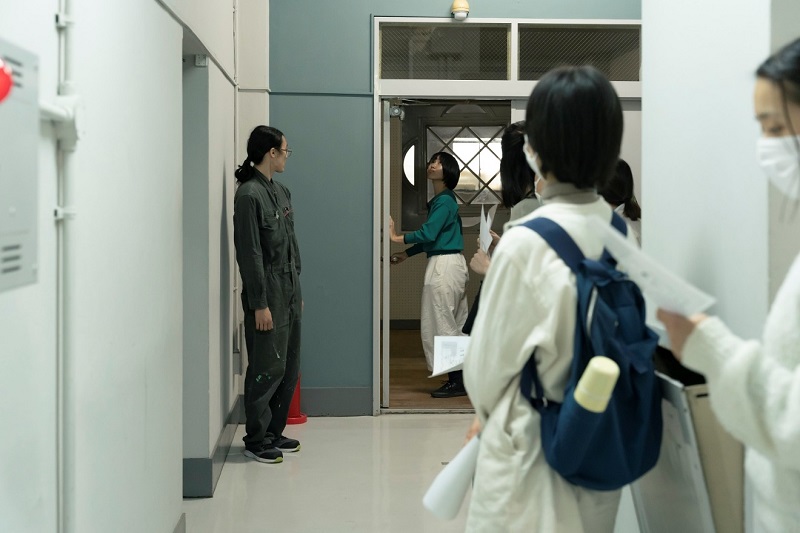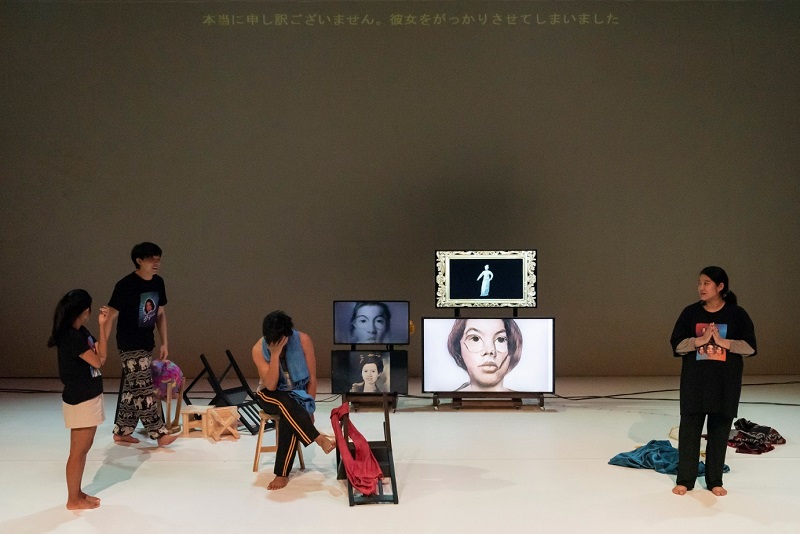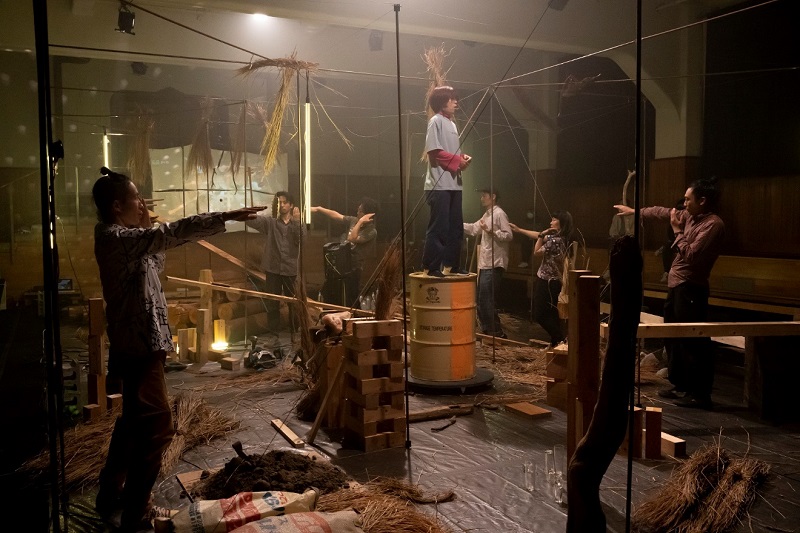Kyoto Experiment: Re-thinking the Festival as a Constant Work-in-Progress
Beri Juraic*
Kyoto Experiment 2022 (Kyoto, Japan), 1–23 October 2022.
Kyoto Experiment, an experimental performing arts festival held annually since 2010, is currently experiencing a renewal of its programming. Founded by the curator and producer Yusuke Hashimoto, the festival quickly became one of the most important in Asia, bringing together some of the most remarkable experimental artists from all over the world. Just before the COVID-19 pandemic, Hashimoto handed over the reins to a trio of directors: Yoko Kawasaki, Juliet Reiko Knapp and Yuya Tsukahara. All three come from different backgrounds, but have a previous connection to the festival in various capacities.
Some of the changes are no doubt a result of this co-artistic directorship, a recurring trend among experimental performing arts festivals across the globe. The pandemic has also arguably influenced the focus of the programming. Whilst theatres and venues in Japan did not shut down on the scale seen in many countries, Kyoto Experiment 2020 had to be moved to spring 2021 in an alternative festival format, which included screenings of foreign productions as Japan’s borders were closed to foreign companies. The 2022 edition was therefore the first festival under their co-direction with international artists presenting in-situ. As part of my fieldwork research on contemporary Japanese theatre, I attended most of the festival’s programme and was able to witness a renewed sense of genuine exchange between local and foreign companies, and between performers and audiences.
The festival programme has traditionally been designed around a particular key concept, a framework within which the selected works are presented. The 2022 edition used the Japanese onomatopoeic word teku teku, meaning walking at a steady pace for a long distance, to which the English word new was added. The concept of new teku teku was not central to all the programming in the festival, rather it was used as a way to ask questions, to re-think how we walk and connect with one another, and to explore how we might transcend the current global situation. This fluid concept is certainly a departure from the festival programmes of Hashimoto’s previous curation, which were more tightly connected.
While continuing the tradition of presenting works in the Shows section, the new directors have initiated two new and on-going innovative programme strands which re-think the festival as a constant work-in-progress, as I will explain below. As with any festival, there were both hits and misses in the Shows section. During the opening weekend, I saw two productions that perhaps coincidentally dealt with the performers’ and spectators’ gaze. The Spacenotblank Japanese collective’s collaboration with the award-winning playwright Shuntaro Matsubara on Views (Saisei sū) oscillated between theatre and film, demanding a lot from its audience due to its slow dramaturgy. The show is best characterised as an action-film, a chase between performers who, for the first hour or so, were almost completely absent from the theatre space. We only occasionally heard their sounds coming from the outside. This absence certainly contributed to a feeling of malaise. It nevertheless posed some interesting questions about what theatre is, as the performers and spectators hesitantly faced each other in the second half of the show.

The cult dance performance TANZ by choreographer Florentina Holzinger (Vienna/Amsterdam/Berlin) had its Asian premiere at the festival. Holzinger’s spectacle questions the ideal of female beauty through, as a starting point, a classical ballet lesson, which then descends into a cacophony of naked imagery, radical body art, circus acts and direct audience address. The gaze appears on multiple levels during the performance, not just between the audience and the performers, but also between the audience members themselves. I was sceptical about how this would be received in Japan, but the festival clearly has a loyal and enthusiastic audience for radical work from abroad.
Later in the Festival I attended two other noteworthy productions. Osaka-based artist Tetsuya Umeda’s Riverwalk is a walking piece located within a former bank’s welfare centre. We were given a map to explore all the nooks and crannies of the building while being loosely guided by performers. It was only when the performers opened and closed the curtain of a large window opening onto the busy streets of Kyoto that I became aware of the building’s decay and transience. At other times, I was overwhelmed by the pungent smells of cooking and dampness. When tea was served on the rooftop, my perception changed, reinstating a sense of the building being alive.

Similarly, at the entrance to Thai director Jarunun Phantachat’s I Say Mingalabla, You Say Goodbye, we were offered a “cultural guide map” and an optional tour of the stage by the performers. Phantachat’s production, commissioned by the festival, is a contemplation on the complex history of the relationship between Thailand and Myanmar, mixed with personal stories of the performers and of Phantachat herself. An ignorance of history becomes evident from the outset, both for the members of the audience that opted for the tour mocking the “sights” of Thailand and Myanmar and for those who watched us taking the tour from their seats. It was performed in five languages (Thai, Burmese, Japanese, English and French) and fused reality and fiction as performers played both themselves, director Phantachat and the various historical figures. The performers were clearly having fun creating a mess on stage accompanied by video installations and projections. I also found that the melodramatic and comical elements were well juxtaposed to the more serious moments on the darker aspects of the totalitarian regimes in Thailand and Myanmar. For me, it was the highlight of festival because it re-thinks the past in the present moment through an interesting multi-layered staging.

One of the new strands, Super Knowledge for the Future (SKF) incorporates a myriad of additional events such as talks, workshops, film screenings and study groups. The aim is to stimulate debate around experimental performing arts and society between audiences, artists and culture producers. For example, I attended an event entitled Art and Politics: Okinawa Between Art and Activism held to mark the 50th anniversary of the ending of the US occupation of Okinawa. A short film, Childhood’s End, by the young film director Rico Fukuchi, was particularly poignant, with footage showing the way Okinawans lived in the past from an insider’s perspective. SKF also continued the festival directors’ ongoing concern around gender and LGBTQI+ issues through workshops, study groups and talks that also related to the Shows programme.

The second new strand, Kansai Studies, is an ongoing research programme undertaken in and around Kyoto and the Kansai region. Its emphasis is on the process of artistic research and on documenting the local communities through texts, photography and videos. The participating artists are not pressured to produce any material. Over the last three years, this has involved a collaboration between an architecture and scenography studio, dot architects, and the theatre director Nagara Wada on the theme of water as a source of life. They travelled extensively around Lake Biwa, the largest lake in Japan and one of the oldest in the world. The documentation of their process is available on a separate website, but during the festival they also presented a performance entitled Countercurrent Journeys. The audience was placed on three sides of a stage resembling a building site, full of pipes, wires, and reclaimed objects. Through a mix of storytelling, stand-up comedy, sounds and noises, they shared both known and more obscure facts about Lake Biwa and the wider region. Essentially, it felt like being in the middle of a work-in-progress. It was quite courageous and commendable that the festival directors chose to showcase an incomplete work in a world obsessed with perfection. Moreover, such projects provide a support structure for local artists beyond the festival period, however limited it may be.
On a final note, this kind of (in)visible work and the out-of-festival interactions with local communities are the most exciting aspects of Kyoto Experiment. The festival is currently facing ongoing financial challenges due to rapidly dwindling subsidies, so we can only hope they can overcome these to continue such vital work.

*Beri Juraic is a PhD Candidate in Theatre Studies at the Lancaster Institute for the Contemporary Arts, Lancaster University, United Kingdom. He was a Visiting Scholar at the Kansai University in Osaka, Japan in the autumn of 2022, supported by the Arts and Humanities Research Council UK and The Great Britain Sasakawa Foundation. He holds an MA in Japanese Studies (Distinction) from SOAS, University of London. His research interests include post-war and contemporary Japanese theatre. Previously, he also worked as a theatre producer and a festival programmer in the UK and abroad.
Copyright © 2023 Beri Juraic
Critical Stages/Scènes critiques e-ISSN:2409-7411
This work is licensed under the
Creative Commons Attribution International License CC BY-NC-ND 4.0.



